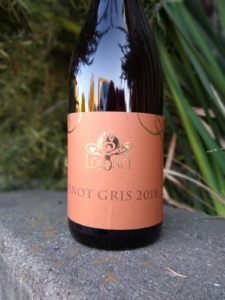Last month, I wrote about dry wines (and one sweet ringer) from Tokaj, in northeast Hungary. This month, we’ll fan out into other Hungarian wine regions and explore more of the dazzling plethora of characterful indigenous grapes, wine regions (many of them, like Tokaj, with volcanic soils), and small, family-run producers.
Most Hungarian white wines offer some body and texture, along with prominent acidity and minerality. They’re also low in alcohol; all but one of the wines presented here are under 13 percent. Don’t let the unfamiliar words on the labels scare you off: I’ve included some pronunciation guidance below, and in any case, the proof is in the glass. If you love French, Italian, Iberian, and higher-acid domestic white wines, these wines will expand your horizons and add a new dimension to your meals (or Zoom happy hours).

The Hungarian wine appellations mentioned in this article (plus Tokaj, from last month’s article).
2013 Fekete Béla Somló Hárslevelű ($23)
Somló (SHOWM-low) is a wine appellation in western Hungary, not too far from the border with Austria–a low volcanic mountain rising out of the plain. Fekete Béla is by local acclaim the “Grand Old Man” of the appellation. This very wine is the last vintage that he made before retiring in his 90s. Hárslevelű (harsh-LEV-el-oo) is the grape variety, a genetic offspring of furmint that’s more aromatic and a little softer in structure.
This wine is aged in large Hungarian oak casks for two years before bottling. The nose is a festival of dried herbs, with some dried flowers playing supporting roles. There are lots of texture and body, plus a hint of sweetness, with just enough balancing acidity and a whisper of bitterness. Those who like aged Sancerre will enjoy this. And how often do you get to drink seven-year-old Hárslevelű?! Try it with herb-y pizza or pasta sauce, or just on its own at the end of a meal, maybe with an herb-crusted semi-aged cheese. (13.5 percent alcohol)
2017 Sziegl Pince Hajós-Baja Olaszrizling Birtokbor ($22)
Hajós-Baja (HI-yosh-BYE-uh) is located in southern Hungary, near Serbia. Olaszrizling (OH-loss-reez-ling), called welschriesling or riesling italico in other countries, has no genetic relationship to true riesling. It’s widely planted throughout Eastern Europe and the most widely planted white variety in Hungary. The Sziegl family started their winery in 2012, with husband Balázs in the vineyards and wife Petra running the cellar and making the wine–a new generation following the old Hungarian custom of men working in the vineyards and women running the cellars. (Pince (PEEN-sa) means cellar; it’s a word you see frequently on Hungarian labels.)
Their olaszrizling is bright, mineral, and slightly herbal, with medium body and mouthwatering acidity. It leans more toward grüner veltliner than toward riesling. GV fans, among others, should check it out. Drink it with all of those green things that you’re inclined to eat with grüner veltliner or sauvignon blanc: artichokes, green beans, basil, arugula pesto… (12.5 percent alcohol)
2018 Losonci Mátra Riesling [skin contact] ($22)
This winery, run by Bálint Losonci (low-SHOWN-see), is in the volcanic appellation of Mátra, in north-central Hungary, between Budapest and Tokaj. He and a few other likeminded small producers are rehabilitating the reputation of Mátra from decades of Communist-era industrial farming and winemaking. Bálint farms organically and works naturally in the cellar, favoring skin contact for the white wines, no filtering, and only minimal SO2 addition at bottling. All of the wines benefit from naturally high acidity due to the crazy mix of volcanic, iron-rich clay, and chalky soils in the vineyards.
This wine is true riesling–not olaszrizling—but utterly unlike any you’ve had, thanks to the soils and a week of skin contact. It’s the other end of the spectrum from a Mosel (German) riesling: spicy, smoky, redolent, textured, and powerful, yet still without overt weight or alcohol, and of course completely dry. If you love riesling, you need to try this wine–and if you don’t, you probably should try it, too, because it’s so atypical. Smoked oysters, spring rolls, kolbasz (the Hungarian version of kielbasa), and barbecue all leap to mind. My wife and I also enjoyed it with a bunch of Vietnamese dishes from Tay Ho in downtown Oakland–yes, that’s a plug. (12.5 percent alcohol)
2017 VáliBor Badacsony Kéknyelű ($32)
Kéknyelű (cake-NYAY-loo) is the grape variety, of which there are 41 hectares (100 acres) in existence, all of them in Badacsony (BOD-ah-chah-nya), a region on the northern shores of Lake Balaton in western Hungary. The producer, Péter Váli, has the perfect description of this wine: “It tastes like frosted basalt rocks.” There’s a smoky, flinty minerality. It’s textural, but with knife-edge acidity. This is a special wine; it’s age-worthy, and also drinking great now. Chablis drinkers will love it–and it offers Premier Cru quality at a Village-level price. Think oysters, Petrale sole, and shrimp risotto. (12 percent alcohol)
2018 Losonci Mátra Pinot Gris [skin contact] ($23)
Here’s another skin-contact white (or, more properly, gray/gris/grigio) from Bálint Losonci in Mátra. Three weeks of skin contact give a medium rosé color and extravagantly spicy nose with minerals, rocks, and baking spices. Aficionados of skin-contact white wines, step right up: This is your (dry) jam. There’s some tannin, so pair it with proteins: Meats (pork, chicken, tacos al pastor) and hard cheeses work well. Or, if you like a gentle tannic twang unadulterated, go for it. (12.5 percent alcohol)
Many thanks to Eric Danch of Danch & Granger Selections, the importer and distributor of all of these wines, for his help with this article.






